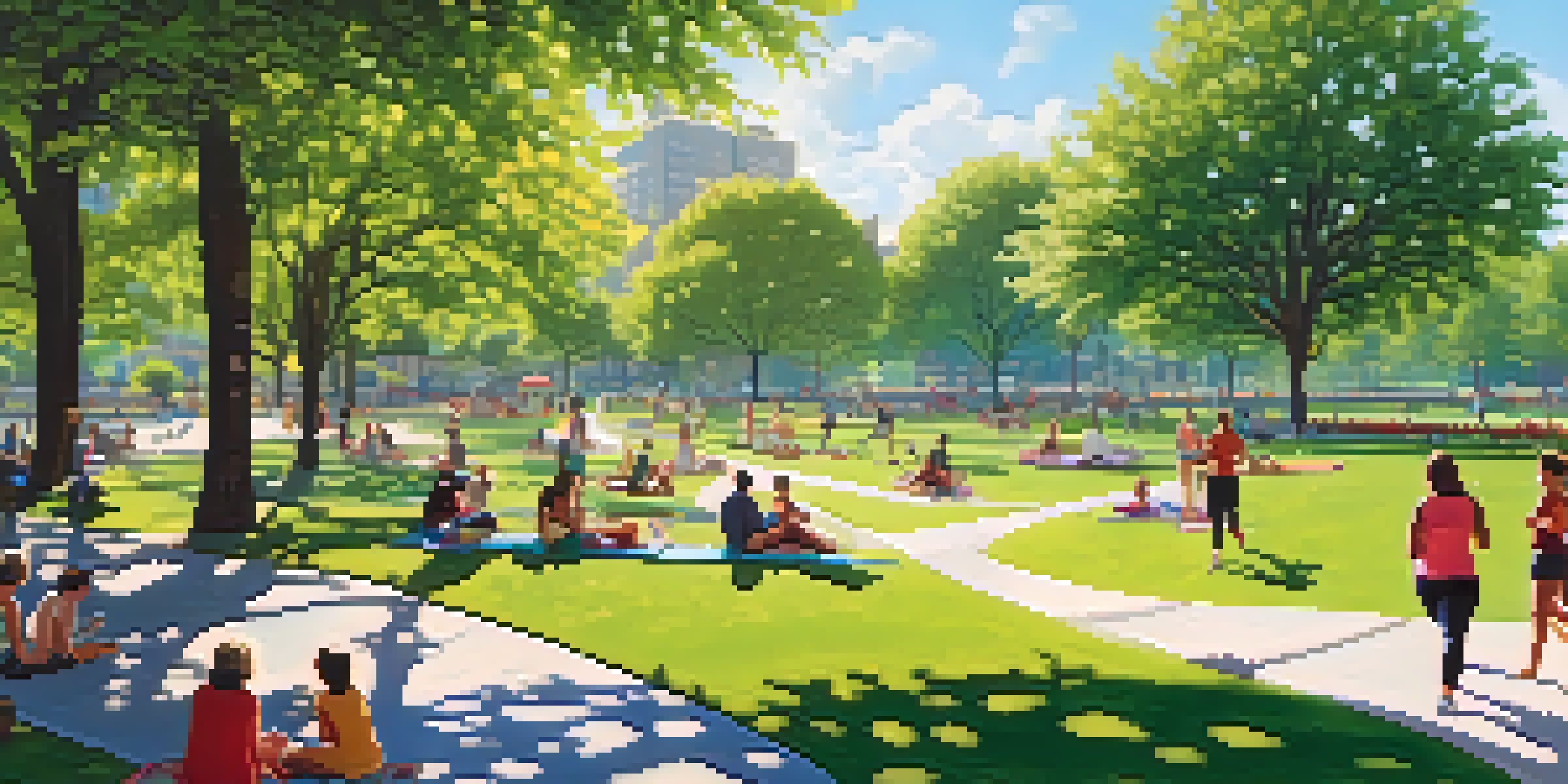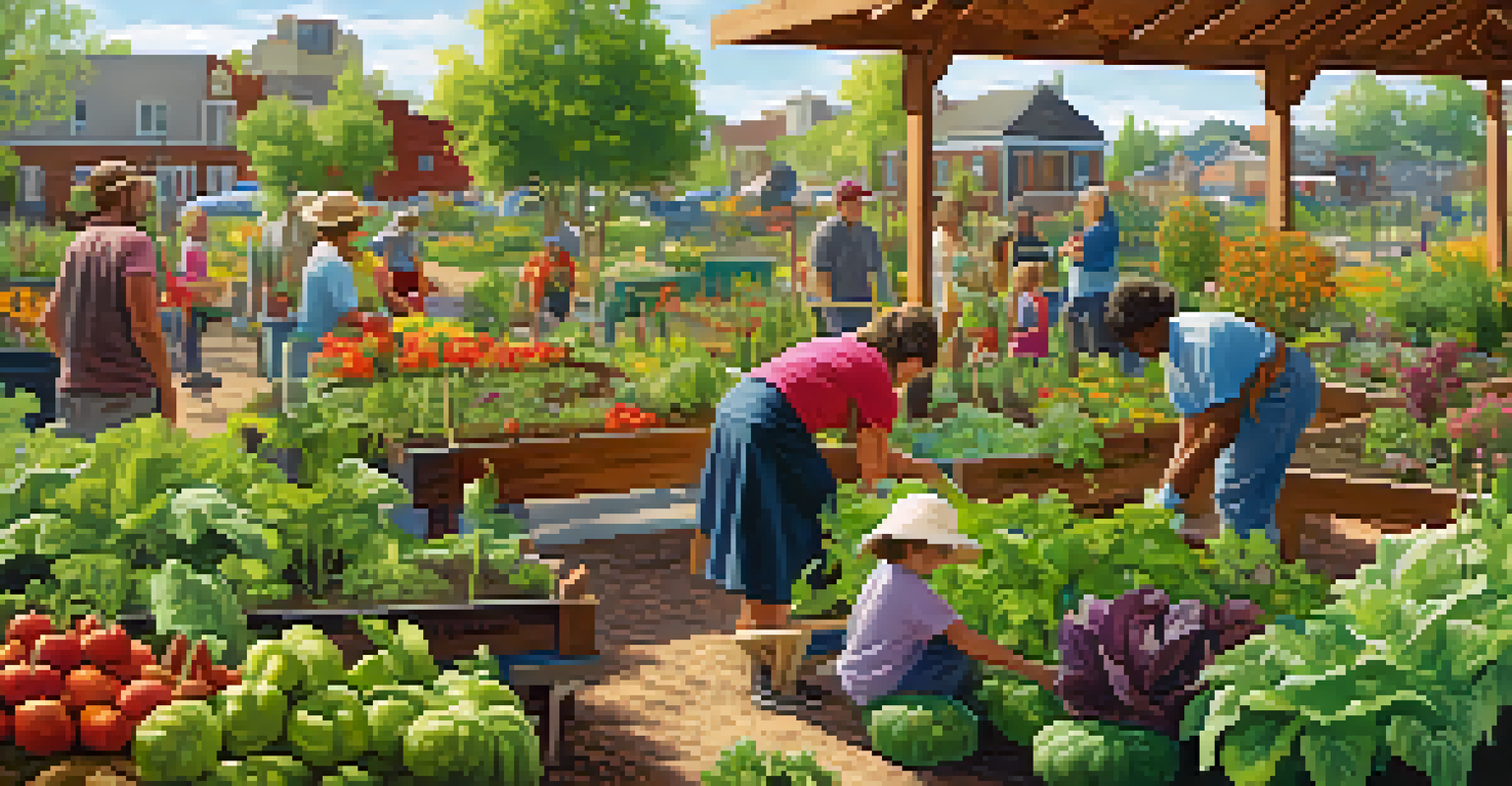Innovative Green Spaces: Enhancing Urban Livability and Nature

The Importance of Green Spaces in Urban Environments
Green spaces are essential for urban areas, providing a breath of fresh air amid the concrete jungle. They offer residents a place to relax, socialize, and connect with nature, which is vital for mental and physical well-being. Imagine stepping into a park filled with trees and flowers after a long day at work; it’s like hitting the refresh button on your mood.
The best thing about a garden is that it never stops growing.
Moreover, these spaces play a crucial role in improving air quality and reducing urban heat. Trees absorb carbon dioxide and release oxygen, helping to mitigate pollution. With climate change looming over us, creating more green areas is not just beneficial; it's necessary.
Lastly, green spaces foster biodiversity by providing habitats for various plants and animals. This biodiversity is crucial for maintaining ecological balance and can even enhance urban agriculture efforts, making cities more self-sustaining.
Innovative Designs: How Nature Meets Urban Planning
Urban planners are increasingly embracing innovative designs that integrate nature into city landscapes. Techniques like vertical gardens and green roofs are becoming popular, transforming blank walls into lush green canvases. Picture a building covered in greenery; it not only looks beautiful but also improves insulation and reduces energy costs.

Another exciting trend is the creation of pocket parks—small parks tucked away in urban corners. These spaces offer quick escapes for city dwellers, turning forgotten lots into vibrant community hubs. It’s amazing how a little greenery can uplift a whole neighborhood.
Green Spaces Boost Urban Well-Being
Green spaces enhance mental and physical health by providing a natural escape for city dwellers.
These designs not only enhance aesthetics but also promote social interaction. When people gather in these green spaces, it fosters a sense of community and belonging, which is essential in our fast-paced urban lives.
The Role of Community in Developing Green Spaces
Community involvement is key to the success of innovative green spaces. When residents actively participate in the design and maintenance of these areas, they feel a sense of ownership and pride. Think of it as planting seeds of connection within the community; the more people contribute, the more they grow together.
In every walk with nature, one receives far more than he seeks.
Collaborative projects, like community gardens, allow people to bond over shared interests while beautifying their surroundings. These gardens not only provide fresh produce but also serve as gathering spots for workshops and events, enriching community life.
Furthermore, involving the community ensures that these spaces cater to the needs and preferences of local residents. After all, what’s more appealing than a park designed with the input of those who will use it?
Benefits of Green Spaces for Mental Health
The mental health benefits of green spaces are profound and well-documented. Studies show that spending time in nature can reduce stress, anxiety, and depression. Just think about how a simple walk in the park can lift your spirits—nature has a way of soothing the soul.
Green spaces also encourage physical activity, promoting a healthier lifestyle. Whether it's jogging, yoga, or simply walking the dog, these areas motivate people to get outside and move. More activity can lead to better mental health, creating a positive feedback loop.
Community Drives Green Space Success
Active community involvement in green space development fosters ownership and meets local needs.
Additionally, nature provides a sense of calm and tranquility, helping to clear the mind. In a world where we're constantly bombarded by information and stressors, having access to green spaces acts as a natural antidote.
Sustainable Practices in Urban Green Space Development
Sustainability is a cornerstone of developing innovative green spaces. Using native plants, for instance, reduces the need for excessive watering and maintenance, making these spaces more eco-friendly. It’s like choosing to plant a garden that thrives on its own, rather than relying on constant care.
Additionally, incorporating rain gardens and permeable pavements can help manage stormwater runoff, preventing flooding and water pollution. These practices not only protect the environment but also enhance the functionality of urban areas.
By adopting sustainable practices, cities can create green spaces that are not only beautiful but also resilient. It's a win-win for both nature and urban residents.
Case Studies: Cities Leading the Way in Green Innovations
Cities around the globe are showcasing innovative approaches to green spaces. For example, Singapore’s Gardens by the Bay is a stunning blend of nature and technology, featuring futuristic structures surrounded by lush greenery. This project has transformed the city into a green oasis and attracted millions of visitors.
Another inspiring case is New York City’s High Line, an elevated linear park built on a former railway track. It has redefined urban space usage, turning an abandoned structure into a vibrant park that promotes biodiversity and community engagement.
Sustainable Practices Enhance Resilience
Incorporating sustainable practices in urban green spaces leads to eco-friendly and resilient environments.
These examples demonstrate that with creativity and vision, urban areas can transform into more livable spaces, proving that nature and city life can coexist beautifully.
The Future of Urban Green Spaces: Trends and Predictions
Looking ahead, the future of urban green spaces is bright and full of possibilities. As cities continue to grow, the demand for accessible green areas will only increase. Trends like biophilic design, which incorporates natural elements into architecture, are likely to gain momentum, creating a seamless blend of indoor and outdoor environments.
Moreover, technology will play a significant role in the development of these spaces. Smart parks equipped with sensors to monitor air quality and visitor patterns could enhance the user experience while promoting sustainability.

Ultimately, the integration of green spaces into urban planning will become essential for creating resilient cities. By prioritizing nature, we can build environments that are not only livable but also thriving ecosystems.